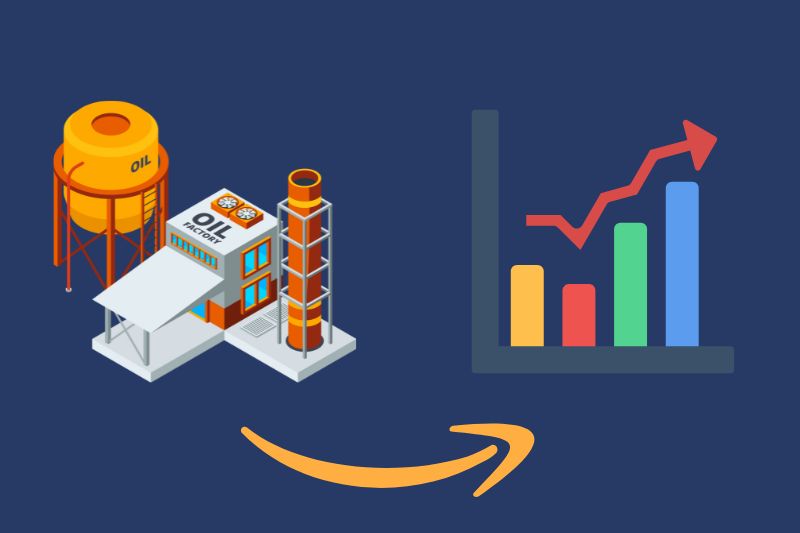In a previous exploration, we delved into the intricacies of utilizing Business Intelligence (BI) and analytics for the oil and gas industry, primarily focusing on tools like Microsoft SQL, Azure, and Power BI. While that approach offers a robust framework, companies looking for alternatives in the cloud computing realm may consider Amazon Web Services (AWS) as a powerful and flexible option.
This article serves as a companion piece, guiding you through implementing a comprehensive, automated forecasting solution for oil and gas prices using AWS’s suite of services. From data ingestion to machine learning and MLOps, we’ll outline how AWS can be leveraged to predict future market trends and inform strategic decision-making.

Whether you’re augmenting your existing infrastructure or seeking a fresh start, this AWS-centric approach stands as a testament to the versatility of cloud solutions in tackling industry-specific challenges.
AWS Services and Tools
- Data Storage and Ingestion:
- Amazon S3: Use S3 as your primary data storage. It can store large amounts of historical and real-time data efficiently.
- AWS Glue or AWS Data Pipeline: These services can be used for data ingestion and ETL (Extract, Transform, Load) processes. They can automate the extraction of daily gas price snapshots from various sources and store them in S3.
- Data Processing and Transformation:
- Amazon Athena or Amazon Redshift: For querying and transforming data stored in S3. Athena is serverless and good for ad-hoc querying, while Redshift is a powerful data warehouse solution.
- Machine Learning and Forecasting:
- Amazon SageMaker: Central to building, training, and deploying machine learning models like ARIMA for forecasting. SageMaker offers a range of tools and capabilities for developing sophisticated models.
- SageMaker Studio: Provides an integrated development environment (IDE) for building and tuning your models.
- MLOps and Automation:
- AWS CodePipeline and AWS CodeBuild: Use these for MLOps (Machine Learning Operations) to automate the machine learning lifecycle, including continuous integration and delivery (CI/CD) of your ML models.
- AWS Lambda: For triggering model retraining and updates based on new data or on a schedule.
- Monitoring and Management:
- Amazon CloudWatch: For monitoring the performance of your models and the overall health of your data pipeline.
- AWS CloudFormation: To manage and provision your AWS resources using Infrastructure as Code (IaC), ensuring consistent and repeatable deployments.

Implementation Steps
- Data Preparation:
- Set up S3 buckets for storing raw and processed data.
- Use AWS Glue to define data crawlers and jobs to extract, transform, and load your data into a suitable format for analysis.
- Model Development and Training:
- Develop your forecasting models in SageMaker Studio, experimenting with ARIMA or other suitable algorithms.
- Train your models using the historical data stored in S3, tuning them for optimal performance.
- Automation and MLOps:
- Implement an MLOps pipeline using AWS CodePipeline and CodeBuild for automated model training, testing, and deployment.
- Use Lambda functions to automate the process of retraining models with new data.
- Model Deployment and Inference:
- Deploy the trained models in SageMaker for real-time or batch predictions.
- Set up a process to continuously feed new data into the model for forecasting the next month’s prices.
- Monitoring and Maintenance:
- Use CloudWatch to monitor the performance of your model and the data pipeline.
- Regularly evaluate the model’s accuracy and update it as needed.
- Security and Compliance:
- Ensure that all AWS services are configured in compliance with your organization’s security policies.
- Use AWS Identity and Access Management (IAM) to control access to your AWS resources.
Conclusion
By leveraging these AWS services, you can build a scalable, automated, and efficient forecasting solution for oil and gas prices. This setup allows for continuous improvement and adaptation of your models, ensuring that your forecasts remain accurate and relevant. Remember, implementing such a solution in a production environment requires careful planning, especially around data security, model accuracy, and operational costs.
Ready to embark on this transformative journey? At Cognixor, we specialize in turning these sophisticated solutions into reality. Whether you’re just starting or looking to enhance your existing systems, our team of experts is here to guide you every step of the way. Contact us to discover how we can help you harness the power of AWS for your oil and gas forecasting needs, setting the stage for future proficiency and success in this rapidly evolving digital landscape.